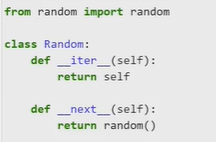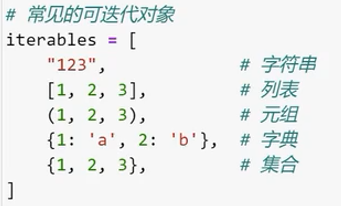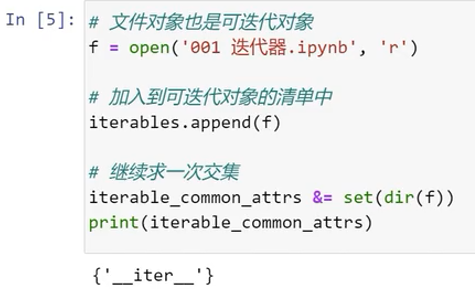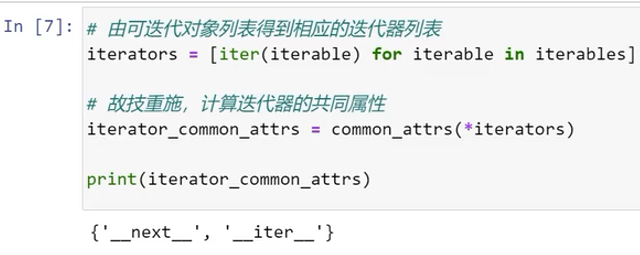对python迭代器的理解
- 迭代器的接口
- 迭代器的用法
- 自定义迭代器
- 迭代器的意义
1迭代器的接口
- 可迭代对象
![image]()
- 计算对象之间的共同属性
![image]()
得到可迭代对象的共同属性
![image]()
上述对象都是容器类型,都有长度
加入文件对象再次求交集
![image]()
得到可迭代对象的唯一共同接口:_iter _
![image]()
![image]()
生成了迭代器
同样方法计算迭代器的共同属性
得到两个接口
![image]()
2迭代器的用法
点击查看代码
# 构建迭代器
actions = ['点赞','投币','收藏']
actions_iterator = iter(actions)
# 多次迭代
action = next(actions_iterator)
print(action)
action = next(actions_iterator)
print(action)
action = next(actions_iterator)
print(action)
action = next(actions_iterator)
print(action)

由此总结迭代三个关键步骤:

通过循环模拟迭代
点击查看代码
iterator = iter(actions)
while True:
try:
print(next(iterator))
except StopIteration:
print('迭代结束')
break
点击查看代码
Black_List = ['白嫖','取关']
class SuIterator:
def __init__(self,actions):
self.actions = actions
self.index = 0 #初始化索引下标
def __next__(self):
while self.index < len(self.actions):
action = self.actions[self.index]
self.index += 1 #更新索引下标
if action in Black_List:
continue
elif '币' in action:
return action*2
else:
return action
raise StopIteration
actions = ['点赞', '投币', '收藏']
SuziIterator = SuIterator(actions)
while True:
try:
print(next(SuziIterator))
except StopIteration:
break
迭代器协议

所有迭代器的_iter_方法都只用returnn self即可
4迭代器的意义

迭代器就是为了让数据结构能快捷地遍历而定义的辅助对象
深层的意义
现有两种可迭代对象
-
容器类型:
列表、元组、字典
只有_ iter _接口
静态的数据
需要额外的迭代器支持
支持多次迭代
![image]()
这种情况下只有可迭代对象在前台露脸,而迭代器是在背后使用默认方式悄悄构建没有存在感,生命周期和循环绑定 -
迭代器类型
文件、StringIO等
同时实现_ iter _ 和_ next _接口
动态的
只能迭代一次
![image]()
整个迭代过程只需要迭代器,迭代器不光是从后台走到了前台,而且让可迭代对象远离了循环,和当前循环操作解耦了,于是乎一个可迭代对象可以构建出多个不同的迭代器,一种迭代器可以应用于任意多个可迭代对象,大大增强了代码复用能力
应用场景
数据管道



数据生成器

这个迭代器不需要存储数据,StopIteration都不用管,可以无穷无尽迭代下去,数据实时产生不占用内存空间















 浙公网安备 33010602011771号
浙公网安备 33010602011771号